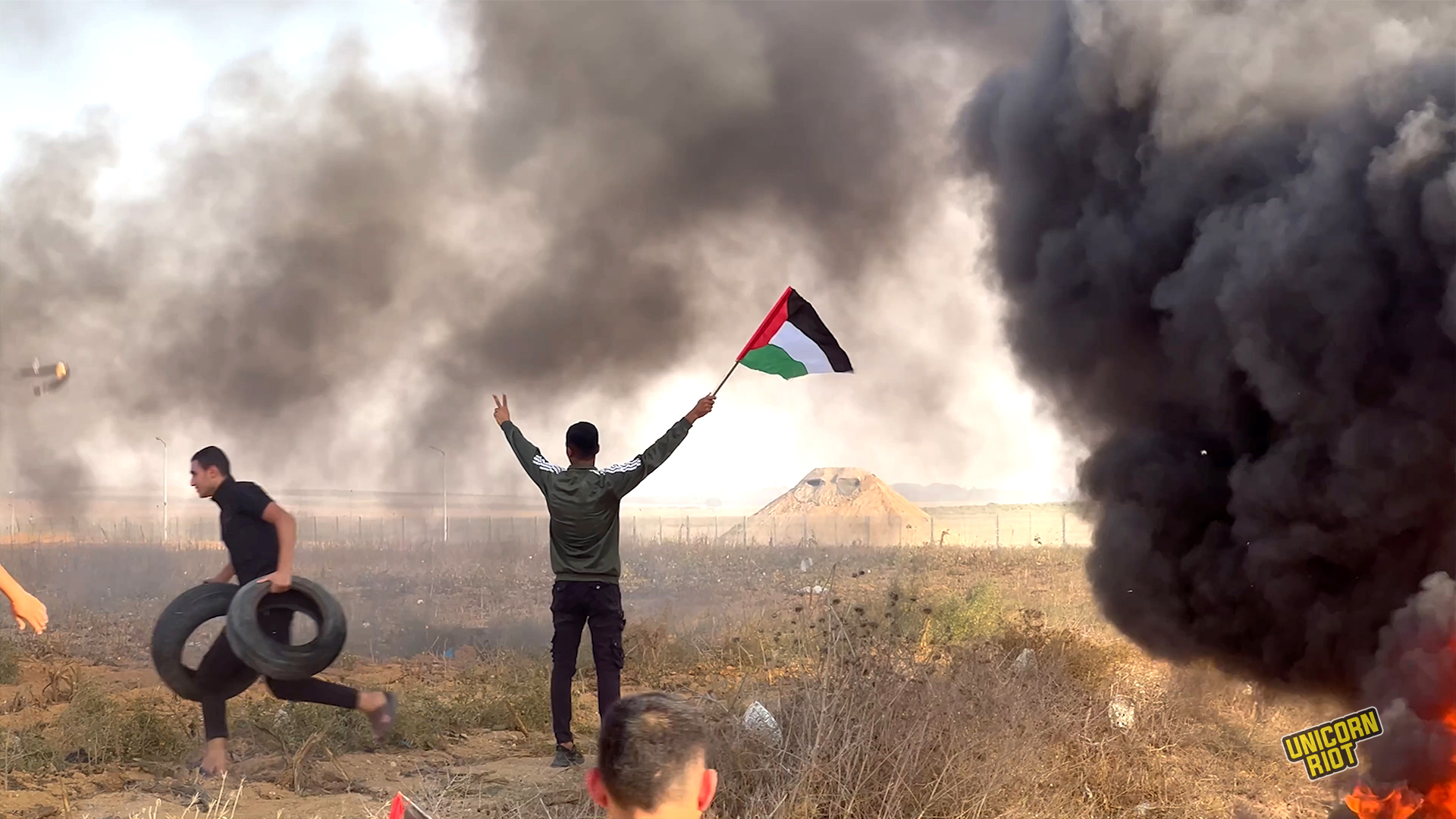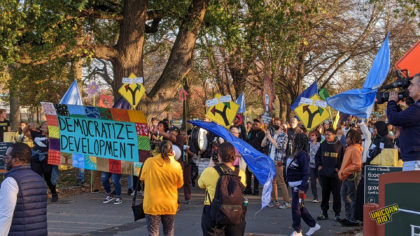Nablus Siege Lifted After 3+ Weeks of Collective Punishment
Nablus, Occupied West Bank, Palestine – Israeli forces and settlers laid siege to over 420,000 Palestinians in the Nablus Governorate for several weeks in October effectively punishing the whole population as they sought the elimination of prominent armed militants from the ‘Lions’ Den,’ or “Areen al-Usud.”
Newly emerging among the backdrop of the deadliest year in a decade, the Lions’ Den is a non-factional paramilitary group of young resistance fighters who are taking up arms against what they deem an occupying force. With over 195 Palestinians killed this year, mostly during Israeli raids in the occupied West Bank, young Palestinians are increasingly arming themselves and defending their neighborhoods from Israeli forces.
Israel claims their year of deadly raids, under the title of Operation Break the Wave, are reactions to attacks that killed 19 people in Israel between March and May 2022. Their stated aim is to arrest or assassinate the perpetrators of the attacks and other armed resistance fighters. Israel has been using collective punishment on families, friends, and whole governorates (county or state-like administrative divisions – there are 16 in Palestine) by demolishing or blowing up homes, controlling Palestinians’ movements and blockading cities.
At least 29 Palestinians were killed by Israeli forces in October, making it the deadliest month in one of the deadliest years in the occupied Palestinian territories by Israeli forces.
Many Palestinian paramilitary forces such as Al Aqsa Martyrs Brigades are typically allied with specific political factions. However, the Lions’ Den, formerly the Nablus Brigades, fight solely in the name of Palestine.
A vast majority of the paramilitary groups in Palestine are designated as terrorist organizations by Western governments. With the Lions’ Den being so new, they have not yet been labeled as such.
From a deadly raid into Nablus two weeks after the siege started, to protests against the siege in Ramallah and Gaza, to speaking with Palestinians stuck in traffic for hours at an Israeli enforced checkpoint near Nablus, the following video brings the perspective from the frontline.
What is the Lions’ Den?
The Lions’ Den is a newly formed paramilitary force of Palestinian militants in Nablus whose first official appearance as a group came in early September. Founded by Muhamad Azizi, 25, the Lions’ Den doesn’t belong to any particular party. This year they’ve evolved through different names and integrated new members who’ve left other paramilitary forces.
Since their inception, the group has galvanized the Palestinian population. Members have attacked Israeli soldiers at checkpoints and have regularly responded to Israeli incursions into Nablus with armed resistance. Throughout the year, the group claimed several attacks against Israeli soldiers and has been the target of numerous deadly Israeli raids dating back to February.
The group grew in prominence after famed leader “The Lion of Nablus,” Ibrahim al-Nabulsi, evaded several capture attempts. Al-Nabulsi, 18, had previously been affiliated with Al-Aqsa Martyrs Brigade, the military wing of the Fatah party.
The young leader was the target of a deadly Israeli attack in February in which he evaded capture. He would later escape a large-scale Israeli military raid on Nablus in late July 2022 in which the founder of the Lions’ Den, Muhamad Azizi, 25, was killed along with another member.
During the July raid, armed clashes went on for nearly four hours after Israeli anti-terrorism and army units infiltrated Nablus’ Al-Yasmina neighborhood. Israeli forces surrounded Azizi’s home before attacking the building with missiles and explosives. Along with those killed, at least 12 others were wounded. Al-Nabulsi reportedly escaped the raid with several other fighters.
Just two weeks after the deadly July raid, Israel bombed Palestinian targets in the Gaza Strip for three days straight. The series of assassinations and bombings dubbed Operation Breaking Dawn by Israel targeted the leadership of the Palestinian Islamic Jihad (PIJ). Armed Palestinian groups fired retaliatory rockets toward Israel and paramilitary leaders called the war a victory for Palestine as differing factions worked together.
On August 7, 2022, a ceasefire temporarily stopped the violent hostilities in Gaza, and the following day, Israeli forces conducted a destructive raid on Nablus using missiles and heavy weaponry. The target of the raid was a house where Ibrahim al-Nabulsi was reported to be at. After a lengthy firefight, the raid eventually killed al-Nabulsi and two others and injured over 40 additional people.
Al-Nabulsi had become somewhat of a legend in the streets. While the Israeli forces were on the hunt for him during the last year of his life, al-Nabulsi was reported to have been seen walking through Nablus regularly and treated as a celebrity by the residents.
Tens of thousands of people flooded the streets of Nablus for the funeral of “The Lion of Nablus” following the announcement that he was pronounced dead in the hospital an hour after being removed from a bombed-out home.
In the weeks following al-Nabulsi’s death, on Sept. 2, members of the Lions’ Den addressed a crowd of thousands to publicly announce their charter and message of independent resistance. Nablus resident Basil al-Shantir told Mondoweiss, “The Lions’ Den is barely a few months old, but they have taken over the public consciousness in a way that is unprecedented.”
The violent Israeli attacks on the Lions’ Den continued and soon took the full form of collective punishment.
Attacks and Collective Punishment, a Cycle of Palestinian-Israeli Conflict [Oct. 2022]
Armed Settlers & Israeli Forces Besiege Nablus
For almost the whole month of October, Palestinians in the occupied West Bank governorate of Nablus faced extreme restrictions on their movements and violence from Israeli forces and colonial settlers.
Starting on Oct. 4, the eve of the Jewish holiday Yom Kippur, armed settlers escorted by Israeli forces closed off roads on the outskirts of Nablus to stop Palestinians from leaving the territory. Settlers and Israeli politicians took part in the blockading of roadways, effectively trapping Palestinians.
A week later, an Israeli soldier was fatally shot at a checkpoint near the Shavei Shomron settlement just west of Nablus by Lions’ Den members. There are around 250 Israeli colony settlements in the occupied West Bank and East Jerusalem holding at least 600,000 Israeli settlers, often under full security by Israeli forces, who captured the West Bank in 1967. All of the settlements are considered illegal under international law.
In response to the killing, on Oct. 12 Israeli forces blocked nearly all of the entrances to Nablus and besieged the entire city.
Checkpoints for Days
As majestic mountains and hills paint the background on the road leading to the Beit Furik checkpoint east of Nablus, hundreds of Palestinian vehicles and thousands of civilians were crammed for hours each day as they awaited passage through new Israeli checkpoints.
Short trips turned into long affairs as Palestinians attempted to travel through the region. For a distance that does not exceed two kilometers, it would take up to 10 hours for a Palestinian citizen to cross due to blockading of the roadways by Israeli forces in October.
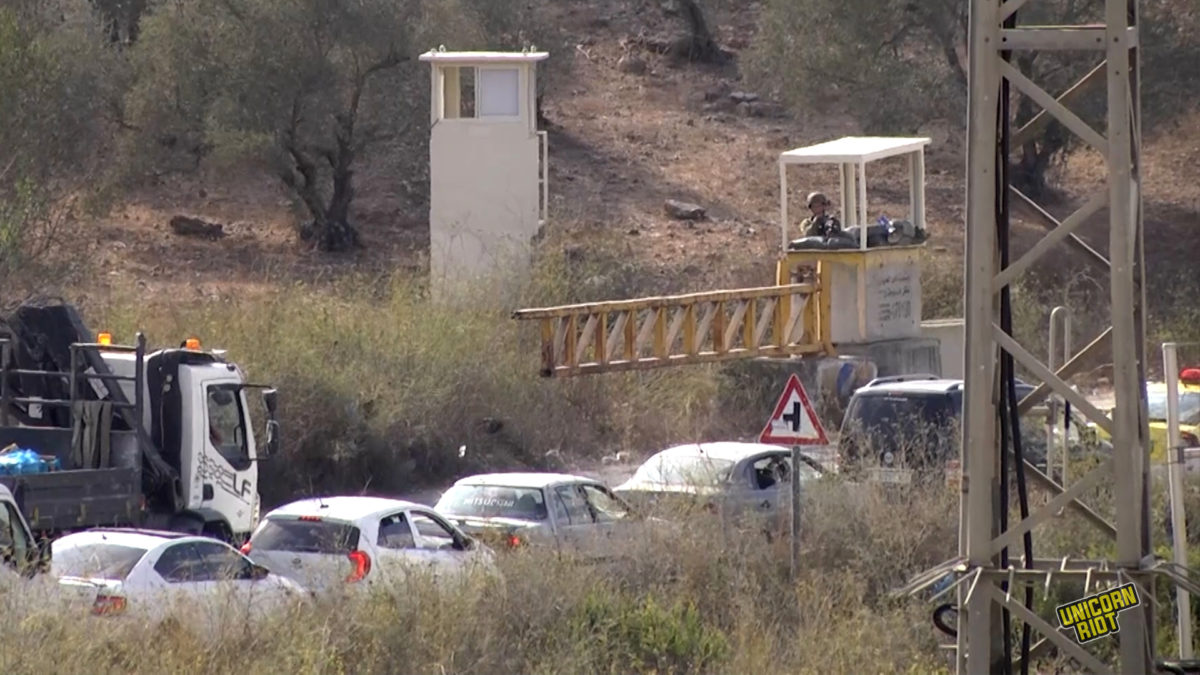
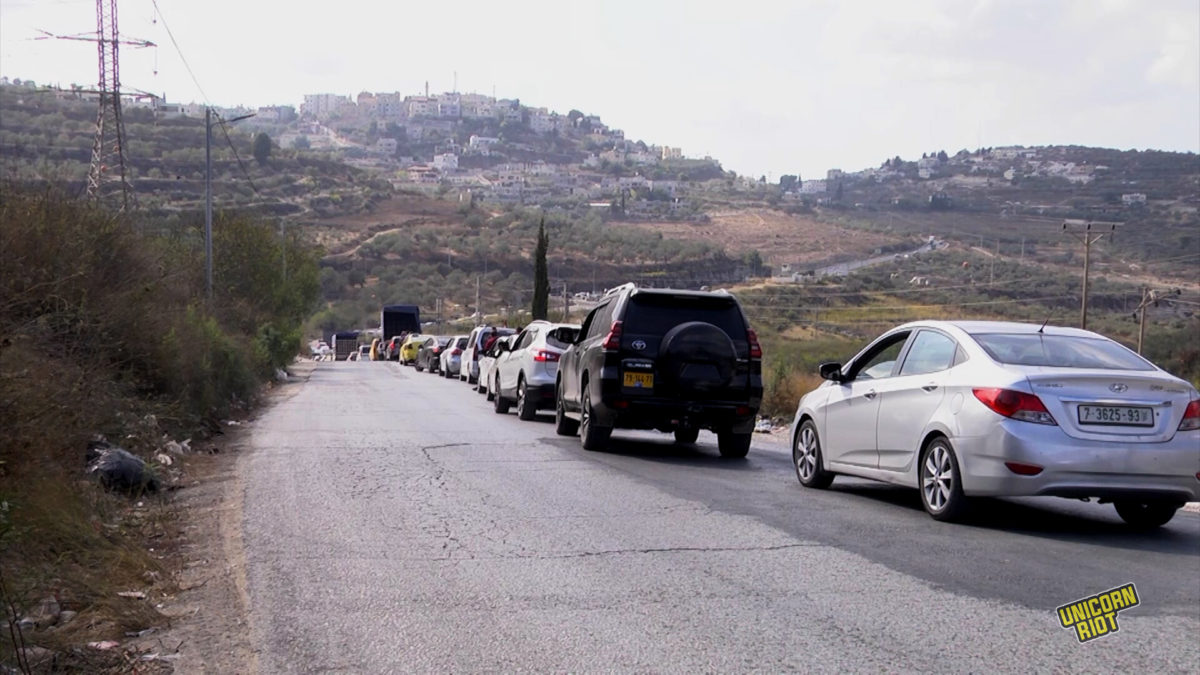
Students, employees, merchants, and patients were brought together by suffering at the Beit Furik checkpoint. Since Oct. 11, this suffering became a daily reality for the Palestinians in Nablus as Israeli forces enacted their siege, deliberately closing the barrier completely and placing new concrete cubes in the roads in a move to further narrow the pathways.
About 425,000 Palestinians live in the city of Nablus and its outlying villages and camps. By closing the main and secondary checkpoints, Israeli forces effectively prevented citizens and their vehicles from leaving Nablus for the greater portion of October 2022.
The elderly and sick were not exempt from being subjected to the several-hour-long checkpoint. Medical patients, like those needing kidney dialysis, were relegated to waiting for hours in long lines and missing days of treatments.
We heard from several Palestinians at the Beit Furik checkpoint who were stuck in traffic during the siege of Nablus. They all expressed their frustration at the waste of time and collective punishment:
“Definitely, in the end this is a situation of occupation. With occupation, as you know, you ultimately can’t do anything about it. As you can see, it’s humiliating. You need 5-6 hours to get to Beit Furik. Imagine, from Nablus to Beit Furik, you need 5-6 hours. In the end, there is nothing one can say. ‘There is no power except by God’ (Islamic saying).”
“As you can see in front of you, a pointless checkpoint. There is no excuse. No excuse for anyone to block the road this way. What do they want? Nobody knows. Of course it affects us. All of our time is going to waste. It’s gotten to the point where you prefer to stay at home instead of spending your day at the checkpoint. What’s better?”
“I came here last Sunday, about 4-5 days ago. When I first arrived, I spent 5 hours until I got to the checkpoint. The situation is really appalling. It’s unbelievable what is happening. God help the people here. If this situation continues it’ll become a problem. Today the whole country is closed. There is a general strike in Nablus.”
“The struggle is still continuing. On the first day, we were held up for about 14 hours. Then another 10 hours.”
The towns of Beit Furik and Beit Dajan, east of Nablus, were the most affected by the closure of the checkpoint, which is the town’s only entrance, after the settlements besieged them from several sides.
In response to the blockade, Nablus’ students and merchants launched a campaign to raise awareness and call on other provinces to support them in whatever ways possible. Organized under the slogan, “Besiege the Siege,” activists worked to restore vitality to the city. After the campaign was launched, Palestinian institutions in the Nablus Governorate issued calls to confront the siege by all means until it was broken.
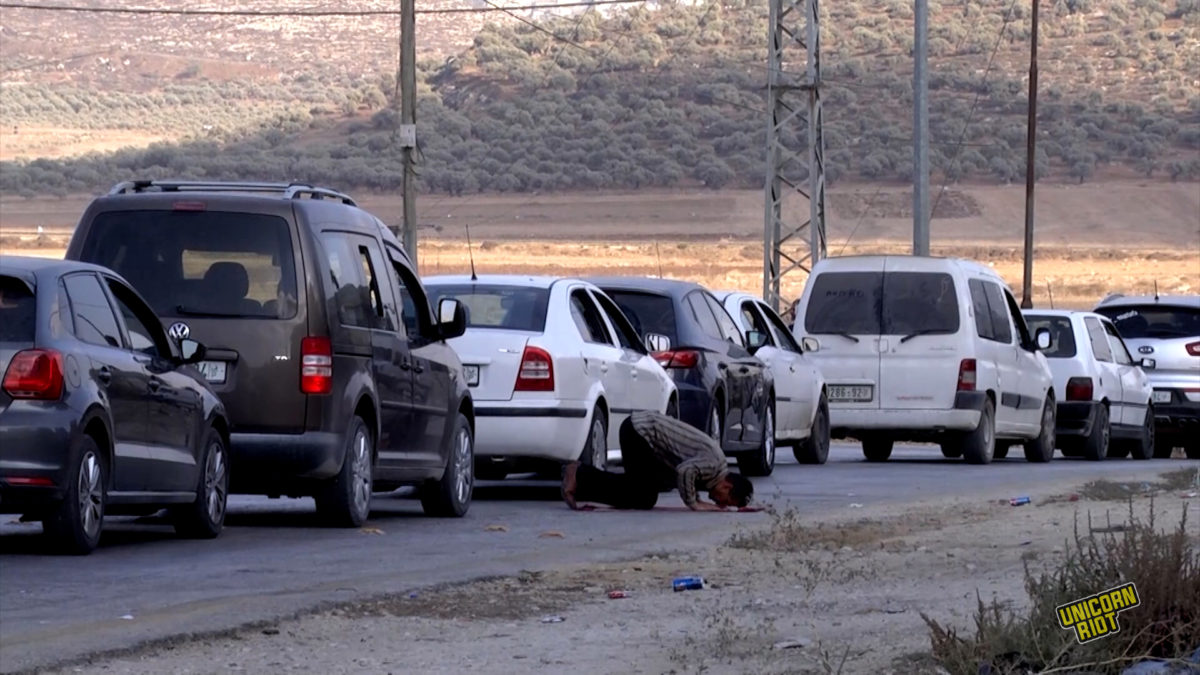
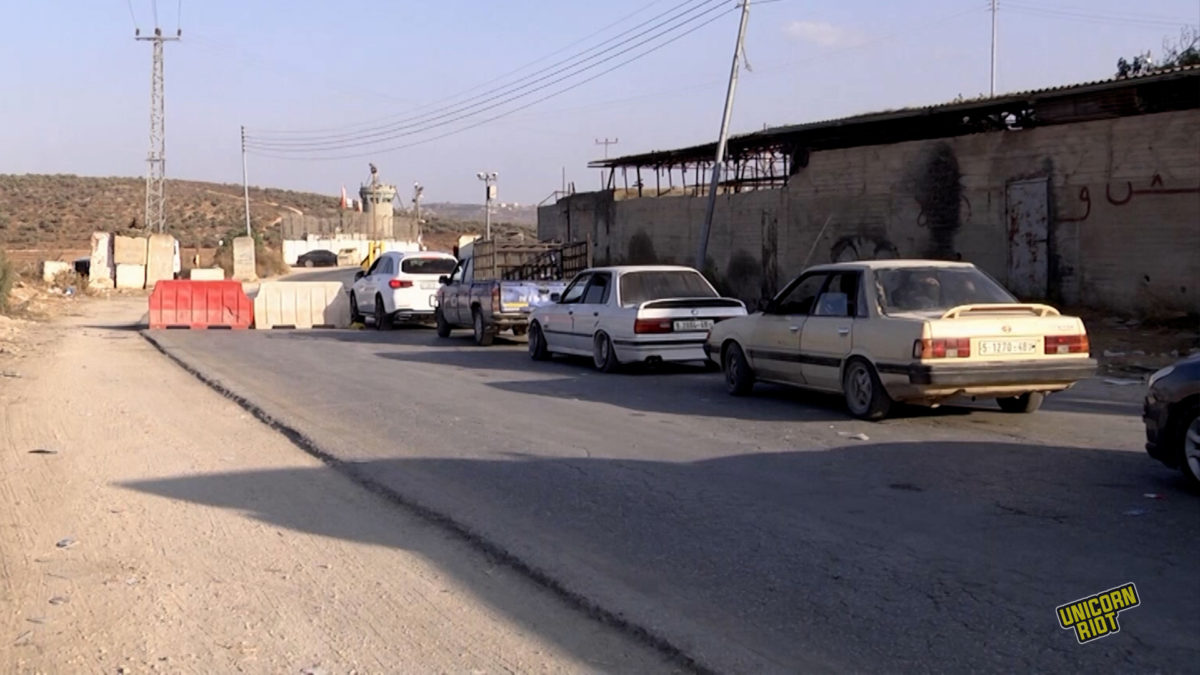
The day after the checkpoints were set up, Israeli settlers along with Israeli soldiers attacked Palestinians in the town of Huwara, beating citizens and breaking the windows of shops and vehicles. A week later on Oct. 19 in Huwara, many of these same settlers attacked Israeli soldiers themselves when the soldiers attempted to prevent them from throwing rocks at Palestinian vehicles. In the third week in October, Haaretz reported there were at least 100 settler crimes against Palestinians in the West Bank in 10 days.
Meanwhile, about 60 miles south, another occupied Palestinian territory bore the brunt of Israeli besiegement. Israeli forces conducted a nearly 10-day-long manhunt through the Shuafat Refugee Camp in Jerusalem seeking Udai Tamimi, 22, who killed an Israeli soldier at a checkpoint on Oct. 11 before evading capture.
Tamimi was killed on Oct. 19 after opening fire on soldiers guarding the Israeli colony settlement of Maale Adumim. After the killing of Tamimi, the Lions’ Den called for protests and a large general strike was held across many cities in the West Bank.
General Strike & West Bank Protests Against the Siege Suppressed
A massive general strike was held on Oct. 20 condemning the killing of Udai Tamimi and the siege of Nablus, shutting down nearly all Palestinian institutions and businesses in the West Bank and East Jerusalem with millions participating. Other forms of protest also occurred in the region, which were violently repressed by Israeli forces.
Media spokesman for Nablus Governorate and the Director of the Palestinian Medical Relief Society, Ghassan Hamdan, told Unicorn Riot that Palestinians were protesting “due to the unjust siege on Nablus.” Hamdan said the protest condemns the “crimes committed by the Israeli occupation soldiers” and sends a message “that the Palestinians cannot be defeated” despite the collective punitive measures.
Dozens of Palestinian youths were injured by live fire and rubber-coated bullets and tear gassed by Israeli forces during the protests. Israeli settlers also attacked several Palestinian towns. The Palestinian Red Crescent reported that 150 people were injured by Israeli forces and settlers in the Nablus Governorate on Oct. 20.
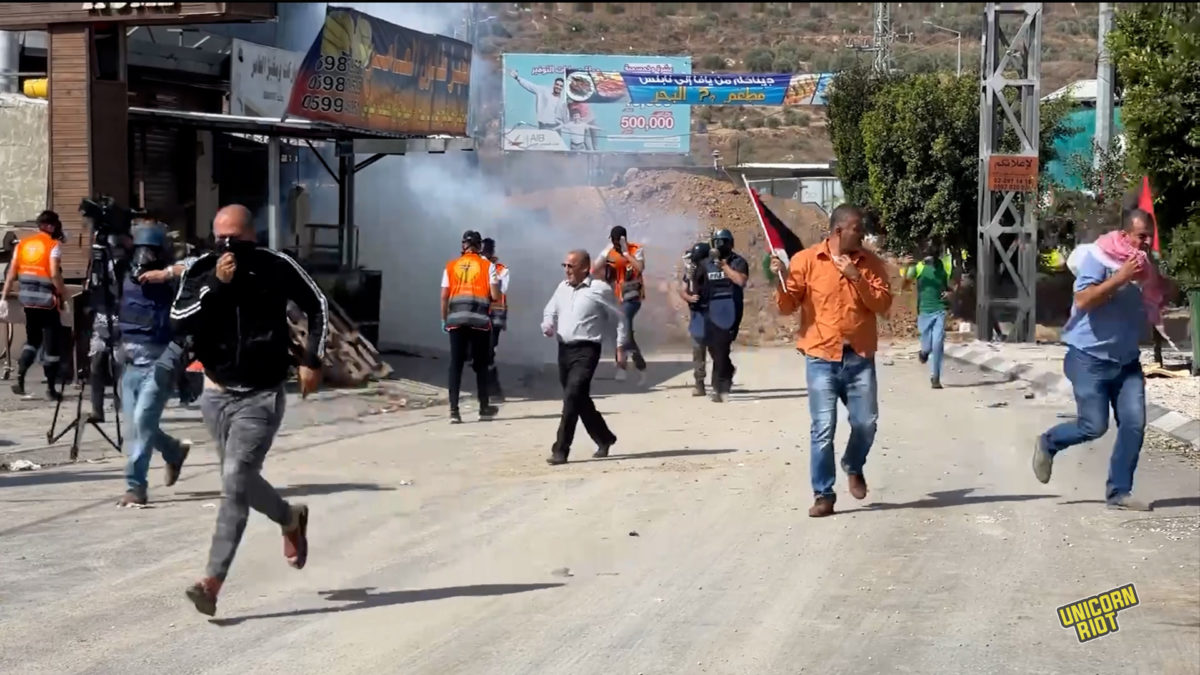
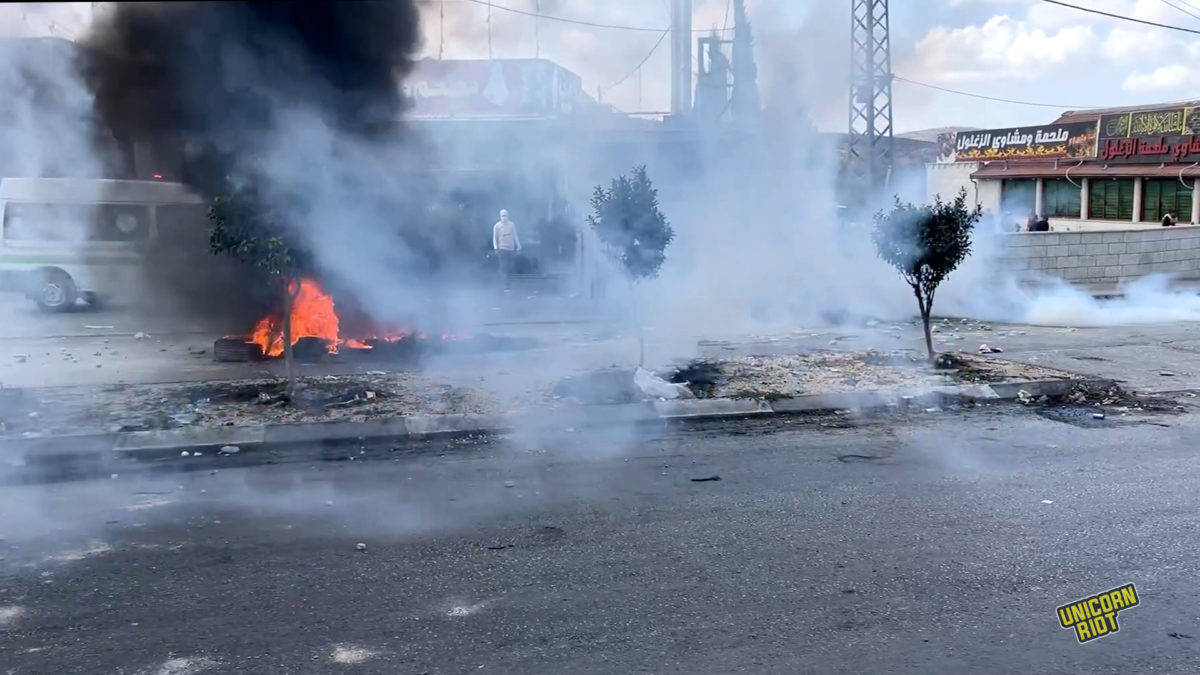
More Attacks on The Lions’ Den
A few days after the settlers’ attacks, the protest repression and the general strike, Israeli forces planted a bomb on a motorcycle in Nablus and killed Lions’ Den member Tamer al-Kilani. A video documented what Palestinians called an “assassination” on Oct. 23.
The Israeli military said al-Kilani was connected to attacks on Israeli soldiers, and although they haven’t specifically claimed responsibility, Lions’ Den social media accounts lay blame directly on Israeli forces.
Two days later, on Oct. 25, Israeli forces conducted another large-scale military raid on Nablus targeting the Lions’ Den. This time they killed five Palestinians and shot at least 22 during drawn-out firefights. Two of those killed were confirmed to have been unarmed barbers who’d just left work. The other three Palestinians killed were members of the Lions’ Den, including Wadee al-Hawah, 31, one of the most prominent leaders.
Al-Hawah and Mish’al Baghdadi were reportedly killed in a besieged home by Energa missiles fired by drones and Hamdi al-Qayyem was killed by a targeted Israeli missile striking his vehicle.
Over a dozen military vehicles with Israel’s Security Agency Shin Bet stormed several neighborhoods in the Old City with the support of a drone. Eyewitnesses reported that Israeli snipers were deployed on the roofs of houses and buildings overlooking the city center and the Old City neighborhoods. Israeli forces were seen preventing ambulance crews from reaching and transporting many of the wounded during the deadly raid.
Statements made by Israel indicated that they targeted leaders of the Lions’ Den for their attacks and claimed they destroyed a laboratory used to manufacture explosives.
An eyewitness to the deadly raid, Muhammad Al-Atheer, said the fighting lasted four hours and a house was targeted with four shells and Energa missiles.
“They fired four shells after shooting. Special forces bombed the same house with Energa missiles. A long clash ensued between them and the Palestinian resistance. The fighting lasted for four hours straight.”
Eyewitness Muhammad Al-Atheer
Along with the five killed in Nablus, another Palestinian was killed in the village of Nabi Saleh. Following the raid, several Palestinian paramilitary groups announced the targeting of numerous Israeli checkpoints, leading to violent confrontations.
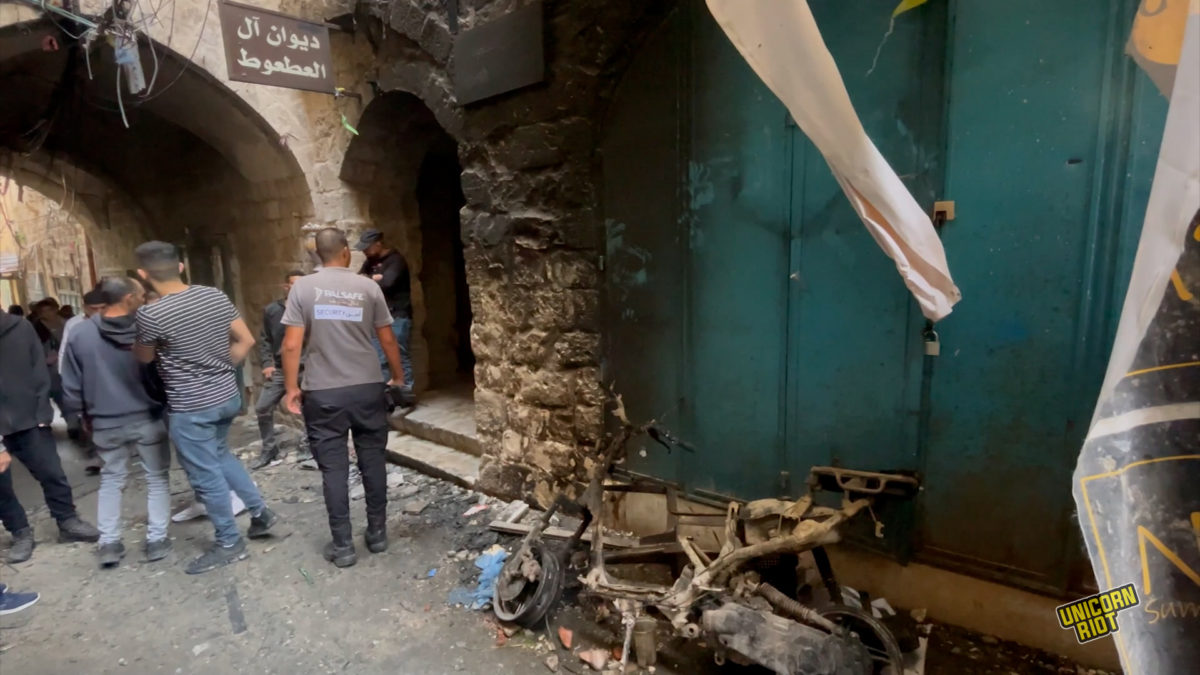
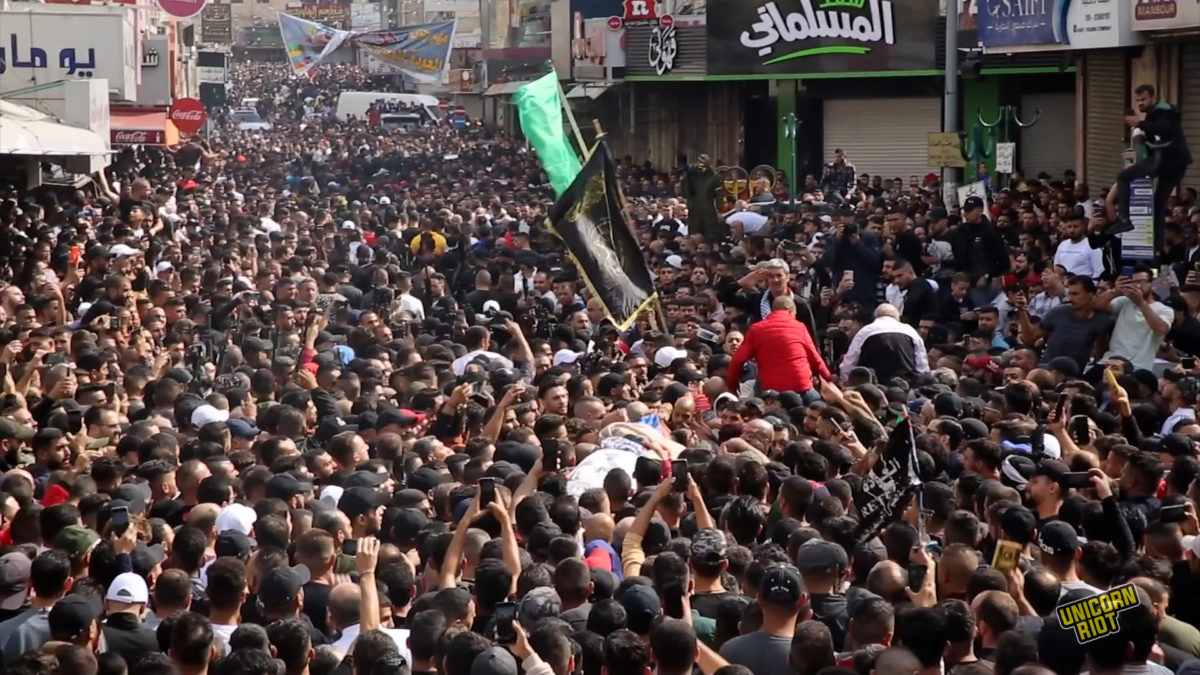
Another General Strike & More Protests
After the Oct. 25 raid, another large general strike was carried out by Palestinians in Nablus along with further protests condemning the siege. These protests were met with repression by Israeli forces.
East of Gaza City in the Malaka camp, angry youths set rubber tires on fire. Hundreds flocked toward the barrier wall, expressing their contempt for the policies of collective punishment.
During a protest near the wall in Gaza, protester Youssef Dalloul said that they were standing in solidarity with Nablus and those who were killed. Dalloul said the youth “confirm the fire of the revolution” and that the occupied Palestinian territories were standing as one:
“The rebellious youths come out and burn these Kushuki tires, confirming that the fire of revolution and the fire of anger is in our chest, and we are now directing it to this Zionist occupiers.”
Surrendering of Lions’ Den Members & Lifting of the Siege
Two days after the deadly Oct. 25 raid that killed three of its members, four Lions’ Den members turned themselves in to the police forces of the Palestinian Authority. The group issued a statement on its Telegram channel saying that each fighter acts in their own faith. The four who surrendered did so at their own will and they hadn’t negotiated their surrender. The Palestinian Authority (PA) works with the Israeli government to handle security related matters and have partial civil control over sections of the West Bank. Created in 1994, the PA is controlled by the second largest political party in Palestine, Fatah, and has its own police force.
On Oct. 28, the Israeli army partially lifted the siege, removing two of the six newly created checkpoints at the entrances to the city. Finally on Nov. 3, after over three weeks of siege, Israeli forces lifted all movement restrictions on Palestinians in the Nablus Governorate and removed the checkpoints.
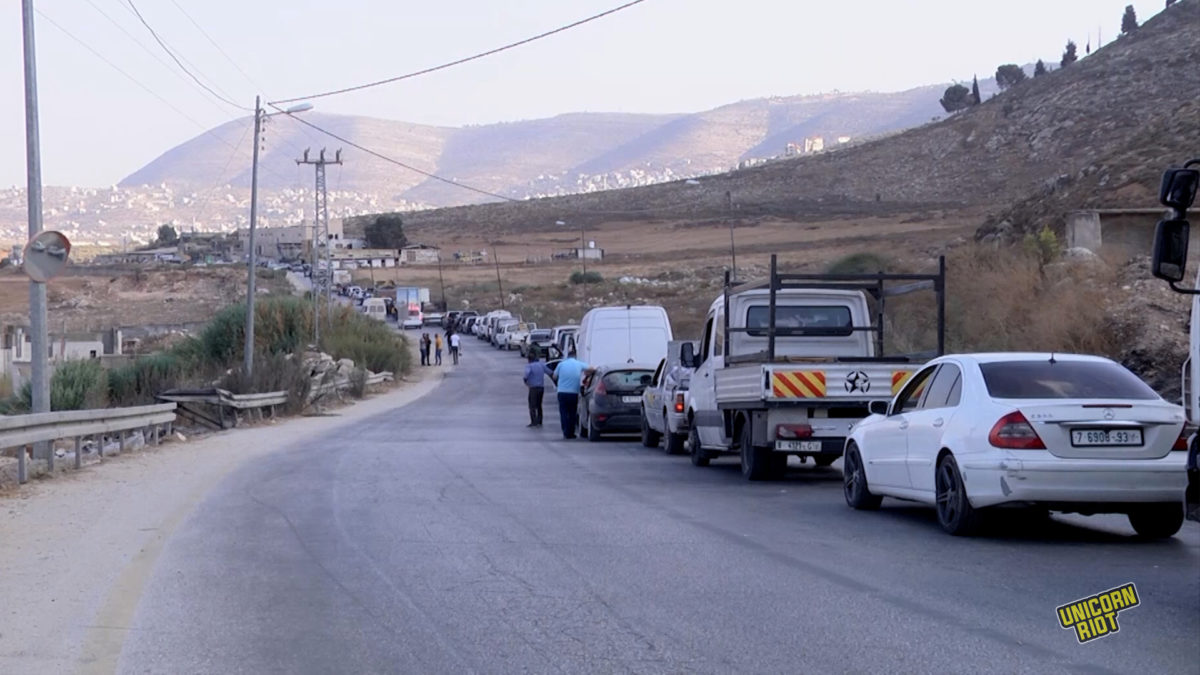
For more from Palestine, see below.
For more from Palestine and pro-Palestine protests click on link below.
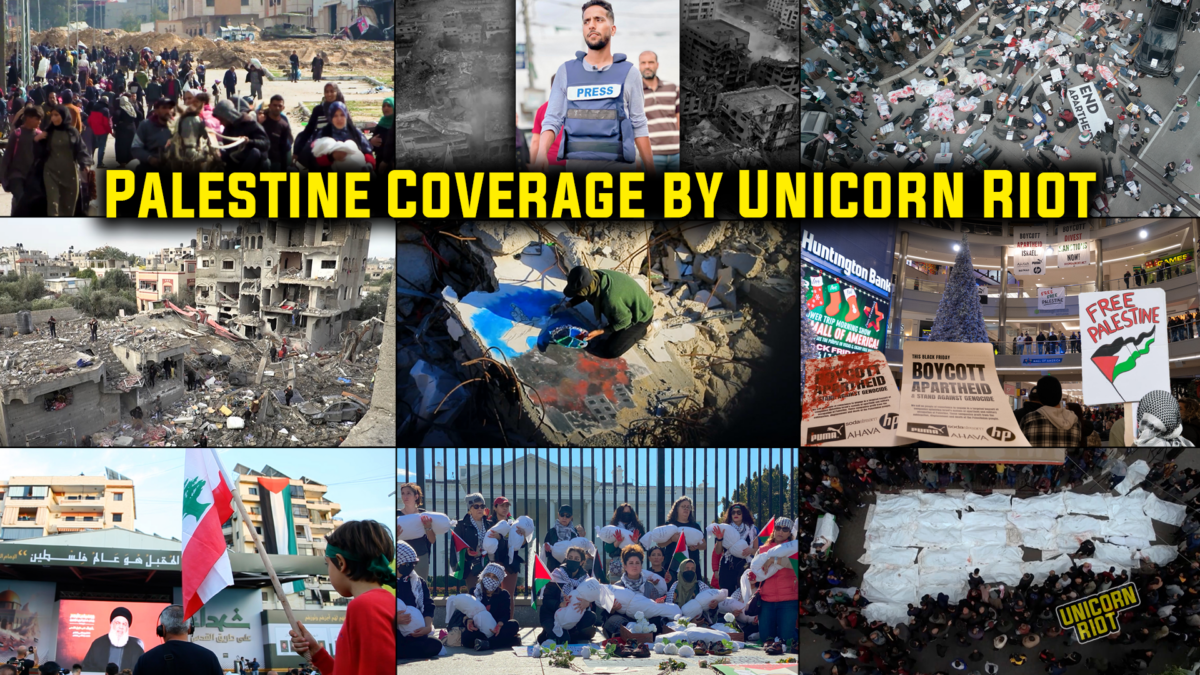
Follow us on X (aka Twitter), Facebook, YouTube, Vimeo, Instagram, Mastodon, Threads, BlueSky and Patreon.
Please consider a tax-deductible donation to help sustain our horizontally-organized, non-profit media organization:

